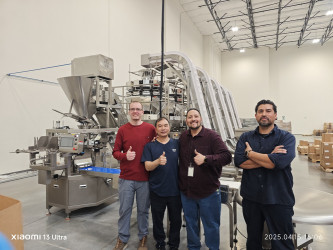Exploring the Impact of Labor Availability on Conveyor System Automation Across Countries
Introduction:
Conveyor systems play a pivotal role in modern industrial operations, facilitating the seamless movement of goods along production lines. However, the degree of automation in conveyor systems varies significantly from one country to another, driven largely by differences in labor availability and associated costs. This article aims to dissect the nuanced relationship between labor levels and conveyor system automation across different countries, shedding light on how socio-economic factors shape industrial landscapes.
Labor Dynamics and Conveyor System Automation:
-
Labor-Intensive Conveyor Systems: In countries where labor is abundant and inexpensive, such as certain regions of Asia and Africa, labor-intensive conveyor systems are prevalent. Manual laborers play crucial roles in tasks like loading, unloading, sorting, and quality control along conveyor lines. These systems often feature minimal automation, relying heavily on human intervention to maintain operational flow.
-
Semi-Automated Conveyor Systems: In nations with moderate labor costs and evolving industrial landscapes, semi-automated conveyor systems are common. Here, a blend of manual labor and basic automation technologies is employed to streamline production processes. While conveyor systems may incorporate elements like automated sorting mechanisms or barcode scanners, human operators remain integral to overseeing operations and addressing contingencies.
-
Fully Automated Conveyor Systems: Conversely, in countries characterized by high labor costs and advanced technological infrastructures, fully automated conveyor systems predominate. These systems leverage cutting-edge robotics, sensors, and artificial intelligence to orchestrate every aspect of material handling and product movement. Human involvement is minimized, with automated processes driving efficiency, precision, and throughput along conveyor lines.
Factors Influencing Conveyor System Automation:
-
Labor Availability and Cost: The availability and cost of labor exert significant influence on the level of conveyor system automation. In regions where labor is plentiful and inexpensive, manual labor remains economically viable, leading to lower levels of automation. Conversely, in countries where labor costs are high, automation becomes imperative to mitigate expenses and maintain competitiveness.
-
Technological Infrastructure: The level of technological infrastructure plays a crucial role in facilitating conveyor system automation. Developed nations with robust technological ecosystems are better equipped to adopt and integrate advanced automation solutions into their industrial processes. This enables the deployment of sophisticated conveyor systems capable of optimizing efficiency, accuracy, and adaptability.
-
Regulatory Environment: Regulatory frameworks related to labor rights, safety standards, and environmental regulations also impact conveyor system automation. Countries with stringent regulations may incentivize automation as a means of ensuring compliance, enhancing workplace safety, and minimizing environmental impact. Conversely, lax regulations may hinder automation adoption by allowing for cheaper labor alternatives.
-
Industry Demands and Innovation: Industry-specific requirements and market dynamics drive innovation and automation in conveyor systems. Sectors with high-volume production, stringent quality standards, and rapid throughput demands are more inclined towards automation to optimize operational efficiency and meet consumer expectations effectively.
Case Studies:
-
China: As a manufacturing powerhouse, China boasts abundant labor resources and relatively low labor costs, resulting in predominantly labor-intensive conveyor systems. However, with advancements in technology and a growing emphasis on efficiency and quality, Chinese industries are increasingly investing in conveyor system automation to enhance competitiveness and meet evolving market demands.
-
Germany: Renowned for its engineering prowess, Germany leads the way in conveyor system automation with a focus on precision, reliability, and innovation. Leveraging advanced robotics, sensors, and automation technologies, German industries optimize conveyor systems to achieve unparalleled levels of efficiency, quality, and flexibility.
-
United States: With a highly skilled workforce and a culture of innovation, the United States adopts conveyor system automation to drive productivity and competitiveness across diverse industries. Advanced automation solutions enable American companies to streamline material handling processes, reduce labor costs, and maintain operational agility in dynamic market environments.
Conclusion:
The degree of automation in conveyor systems is intricately linked to labor dynamics, technological advancements, and regulatory frameworks within each country. By understanding these factors and leveraging appropriate strategies, businesses can optimize conveyor system automation to enhance operational efficiency, reduce costs, and remain competitive in a rapidly evolving global marketplace. As the industrial landscape continues to evolve, the role of automation in conveyor systems will undoubtedly shape the future of manufacturing and logistics on a global scale.



